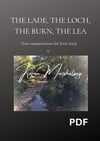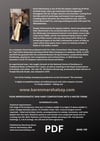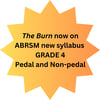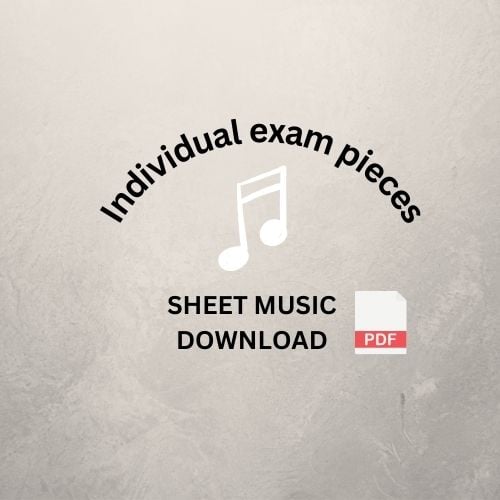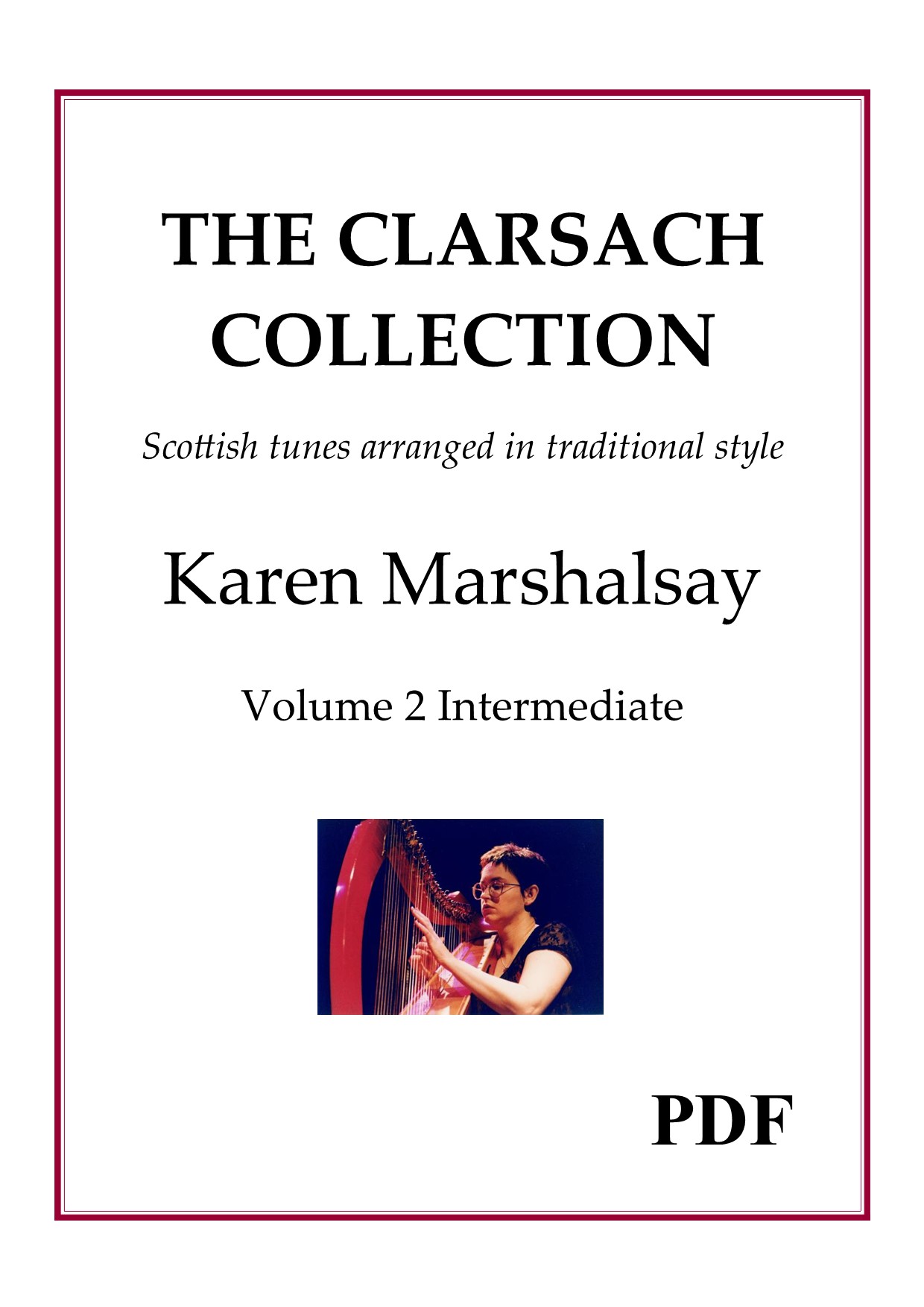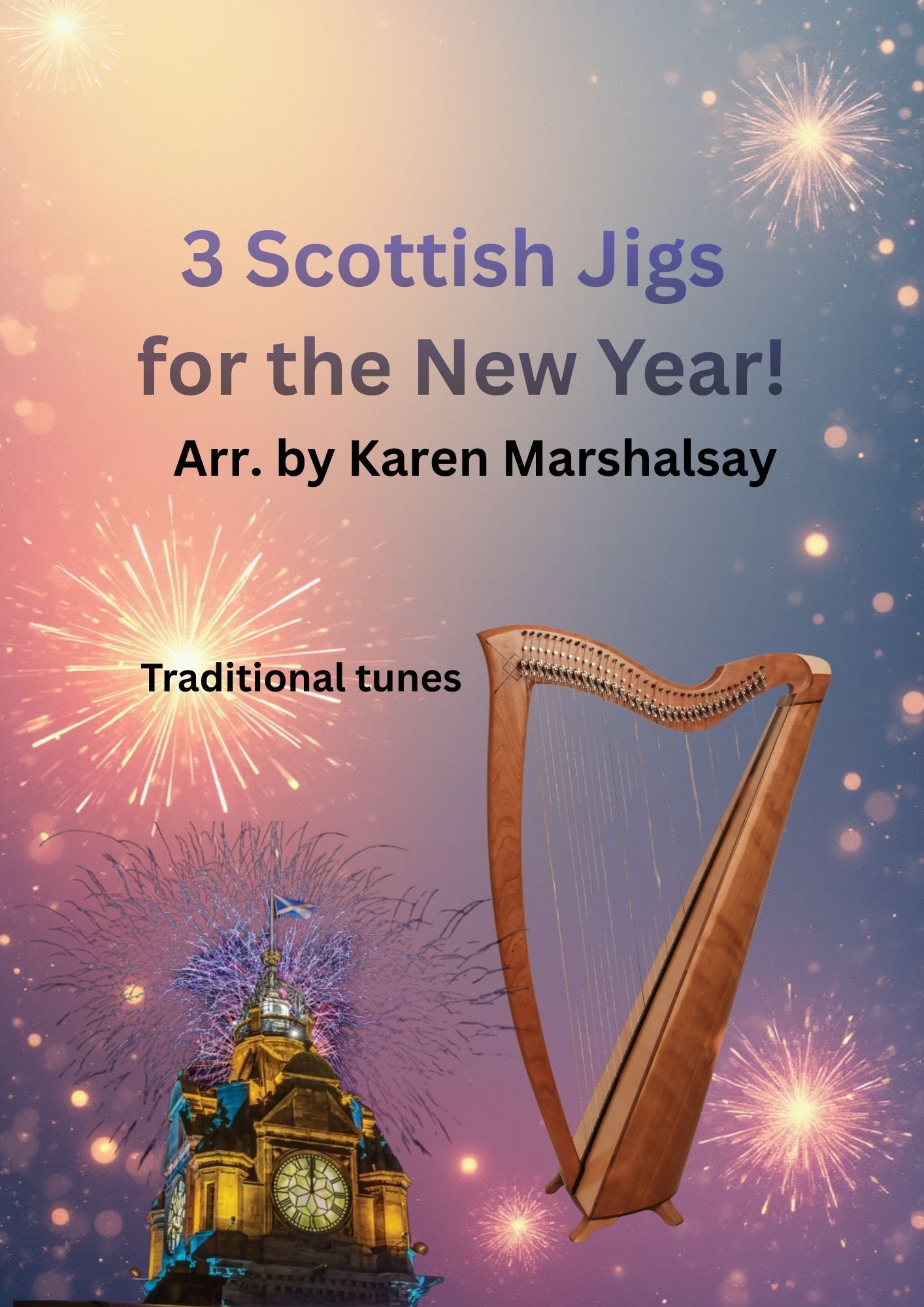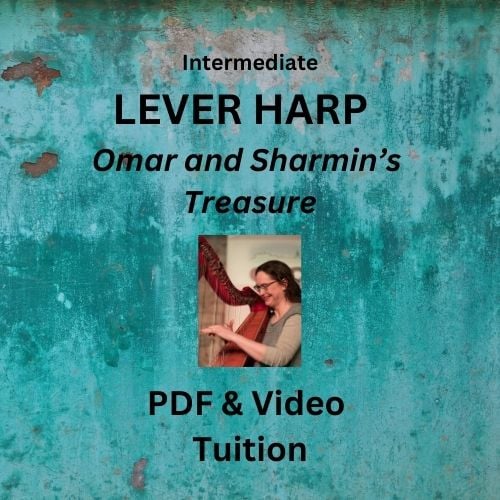The Lade, the Loch, the Burn, the Lea £10
FOUR IMPRESSIONISTIC NEW HARP COMPOSITIONS WITH A WATER THEME
The first piece The Lade, was written for Harps North West's JuNEWary challenge 2024, and the other 3 form a suite of pieces that can be played after it if you wish, or can stand alone. You can view teaching and play along videos for The Lade by Mary Dunsford here. Click through the pictures on the left to see Karen leading the Zoom playalong on 14 June 2024, and again for Mary playing The Lade in the teaching videos.
The Burn is now on the new (2025) ABRSM Harp Syllabus at Grade 4 for both Pedal and Non-Pedal Harp.
"Each of the four works is a charming Scottish idyllic landscape; technically not too hard to tackle, and with very little lever changes, the rhythmic interest is in the lilt of the groove and cross rhythms the left-hand draws around the right hand melodies."
REVIEW IN HARP - BY GABRIELLA DAL’ OLLIO
THE UNITED KINGDOM HARP ASSOCIATION MAGAZINE - AUTUMN 2024
INTERMEDIATE LEVEL
Technical requirements :
Full range of 34 string harp, from low C (2 below middle C) to high E (3 above middle C). Lever changes between pieces. LH includes triads, 5ths, octaves (largest stretch required), rolled and broken chords, accompaniment to melody, harmonics, and notes played near the neck. Rhythmic patterns and chordal runs using both hands and LH crossing over RH. Both rhythmic and flowing melodic phrasing in RH. Full dynamic markings. C, G & D tunings. 4/4, 6/8 and 3/4 time signatures.
About this music
These pieces are reflections of some of my favourite places, remembered from childhood and still the types of places I love to explore and spend time in. There is, I find, a sense of peace and contemplation in being near water, whether in the height of summer, the first stirrings of spring or even the depths of winter. No matter what emotions or thoughts you take there, you can find a quiet joy and contentment by the waterside.
A lade, as it’s called in Scotland, is a mill lade or mill race, which runs the water wheel. Lochs are of course abundant here and a major part of the landscape. The word burn is used for both streams and larger rivers at times too. Where I grew up in Kilbirnie the River Garnock was always just called the burn. I crossed it every day on my way to primary school and it was a great place to play too! A lea is a flat grassy field, often beside a river.
The four pieces can be played as a suite (about 8-9 minutes), in pairs, or each piece can stand alone. Dynamics are given and tempos suggested, but fingerings are left to the preference of each player.
Karen Marshalsay
Edinburgh 2024




